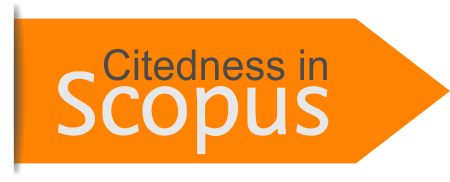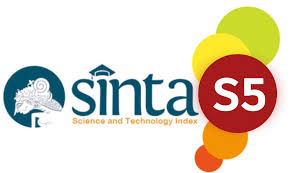Investment Portfolio Optimization With Mean-Variance Investment Portfolio Optimization Model Without Risk Free Assets
Abstract
Forming a portfolio is a strategy that is often carried out by investors in risky investment conditions. Five non-risk free stocks were selected, namely PTBA, IPCM, ANTM, BUMI, and ADMF. The purpose of forming this portfolio is to determine the composition of the weight (proportion) of the allocation of funds in each of these shares in forming the optimum portfolio. The method used is the Mean-Variance investment portfolio optimization model without risk-free assets using the Markowitz approach. Based on the results obtained by the optimum portfolio of the Mean-Variance model without risk-free assets, the average return is 0.00105 and the variance is 0.000067 with a portfolio ratio value of 14.65256. The proportion of fund allocation to PTBA shares = 0.28872; IPCM=0.02484; ANTM=0.00016; EARTH=0.13501; and ADMF=0.55126. It is hoped that the formation of this portfolio optimization model will be useful as an alternative for investors in optimizing the investment portfolio to make it more profitable in the future.
Keywords
Full Text:
PDFReferences
Brandtner, M. (2013). Conditional Value-at-Risk, spectral risk measures and (non-) diversification in portfolio selection problems–A comparison with mean–variance analysis. Journal of Banking & Finance, 37(12), 5526-5537.
Chen, W., Zhang, H., Mehlawat, M. K., & Jia, L. (2021). Mean–variance portfolio optimization using machine learning-based stock price prediction. Applied Soft Computing, 100, 106943.
Das, S., Markowitz, H., Scheid, J., & Statman, M. (2010). Portfolio optimization with mental accounts. Journal of financial and quantitative analysis, 45(2), 311-334.
Gökgöz, F., & Atmaca, M. E. (2012). Financial optimization in the Turkish electricity market: Markowitz's mean-variance approach. Renewable and Sustainable Energy Reviews, 16(1), 357-368.
Hariharan, G., Chapman, K. S., & Domian, D. L. (2000). Risk tolerance and asset allocation for investors nearing retirement. Financial Services Review, 9(2), 159-170.
Köseoğlu, S. D., & Mercangöz, B. A. (2013). Testing the validity of standard and zero beta capital asset pricing model in Istanbul stock exchange. International Journal of Business, Humanities and Technology, 3(7), 58-67.
Kresta, A., & Zelinková, K. (2015). Backtesting of portfolio optimization with and without risk-free asset.
Lintner, J. (1975). The valuation of risk assets and the selection of risky investments in stock portfolios and capital budgets. In Stochastic optimization models in finance (pp. 131-155). Academic Press.
DOI: https://doi.org/10.46336/ijqrm.v3i4.360
Refbacks
- There are currently no refbacks.
Copyright (c) 2022 Wilda Nur Rahmalia, Dwi Susanti, Rizki Apriva Hidayana

This work is licensed under a Creative Commons Attribution 4.0 International License.
Published By:
IJQRM: Jalan Riung Ampuh No. 3, Riung Bandung, Kota Bandung 40295, Jawa Barat, Indonesia
IJQRM Indexed By:
 Creation is distributed below Lisensi Creative Commons Atribusi 4.0 Internasional.
Creation is distributed below Lisensi Creative Commons Atribusi 4.0 Internasional.








